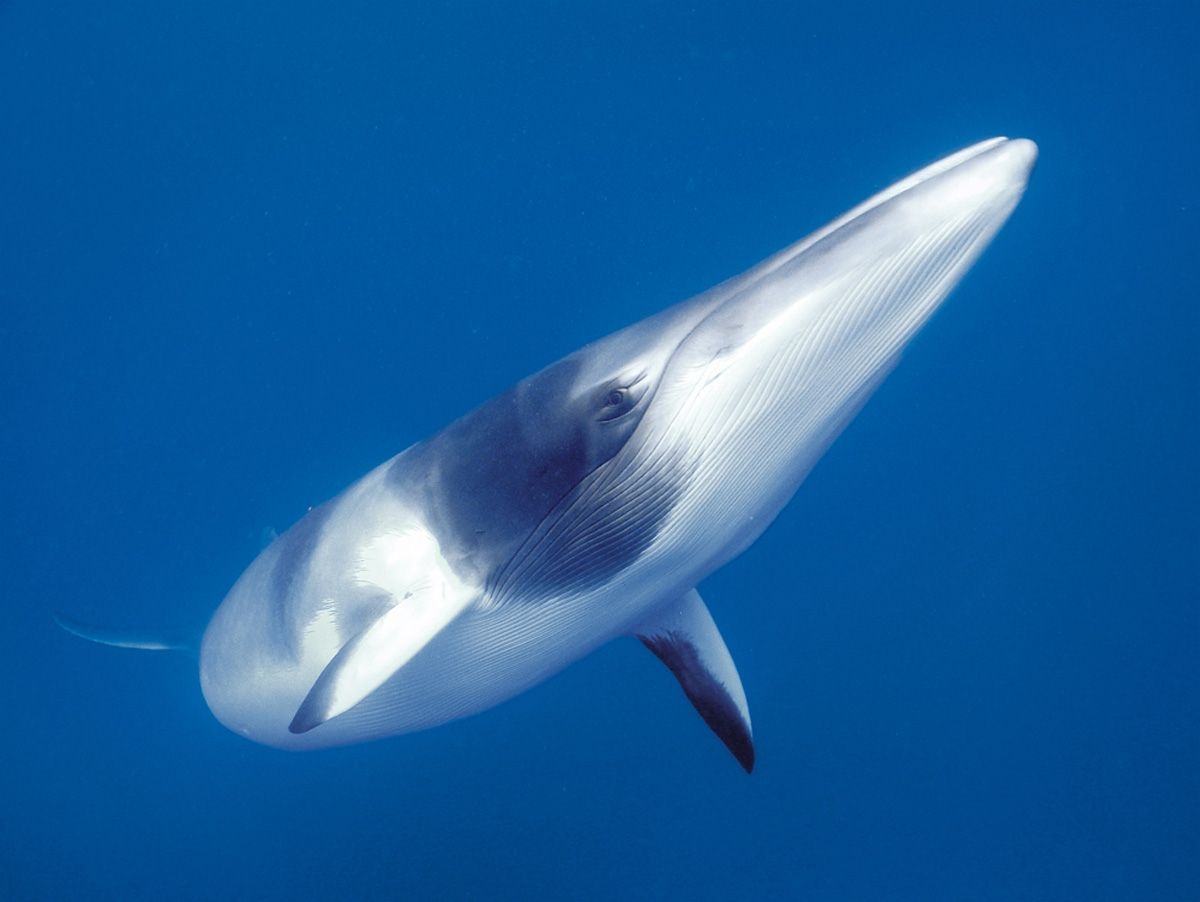Minke whales are members of the baleen or “great” whale family and are the smallest of the rorquals. They are one of the most abundant rorqual in the world, and their population status is considered stable throughout almost their entire range (especially when compared to other species of large whales).
They received their common name from a Norwegian novice whaling spotter named Meincke, who supposedly mistook a minke whale for a blue whale. Minke whales in the United States are not endangered or threatened, but they are protected under the Marine Mammal Protection Act.
The common minke whale is the smallest baleen whale in North American waters. These rorquals have a relatively small, dark, sleek body that can reach lengths of up to about 35 feet and weigh up to 20,000 pounds. Females may be slightly larger than males. Minke whales have a fairly tall, sickle-shaped dorsal fin located about two-thirds down their back. Their body is black to dark grayish/brownish, with a pale chevron on the back behind the head and above the flippers, as well as a white underside. Calves are usually darker in coloration than adults
- Mass: 9,000 – 10,000 kg
- Lifespan: 30–50 years
- Conservation status: Least Concern (Population stable)
- Scientific name: Balaenoptera acutorostrata
- Order: Artiodactyla
- Family: Balaenopteridae
- Length: about 10 m
